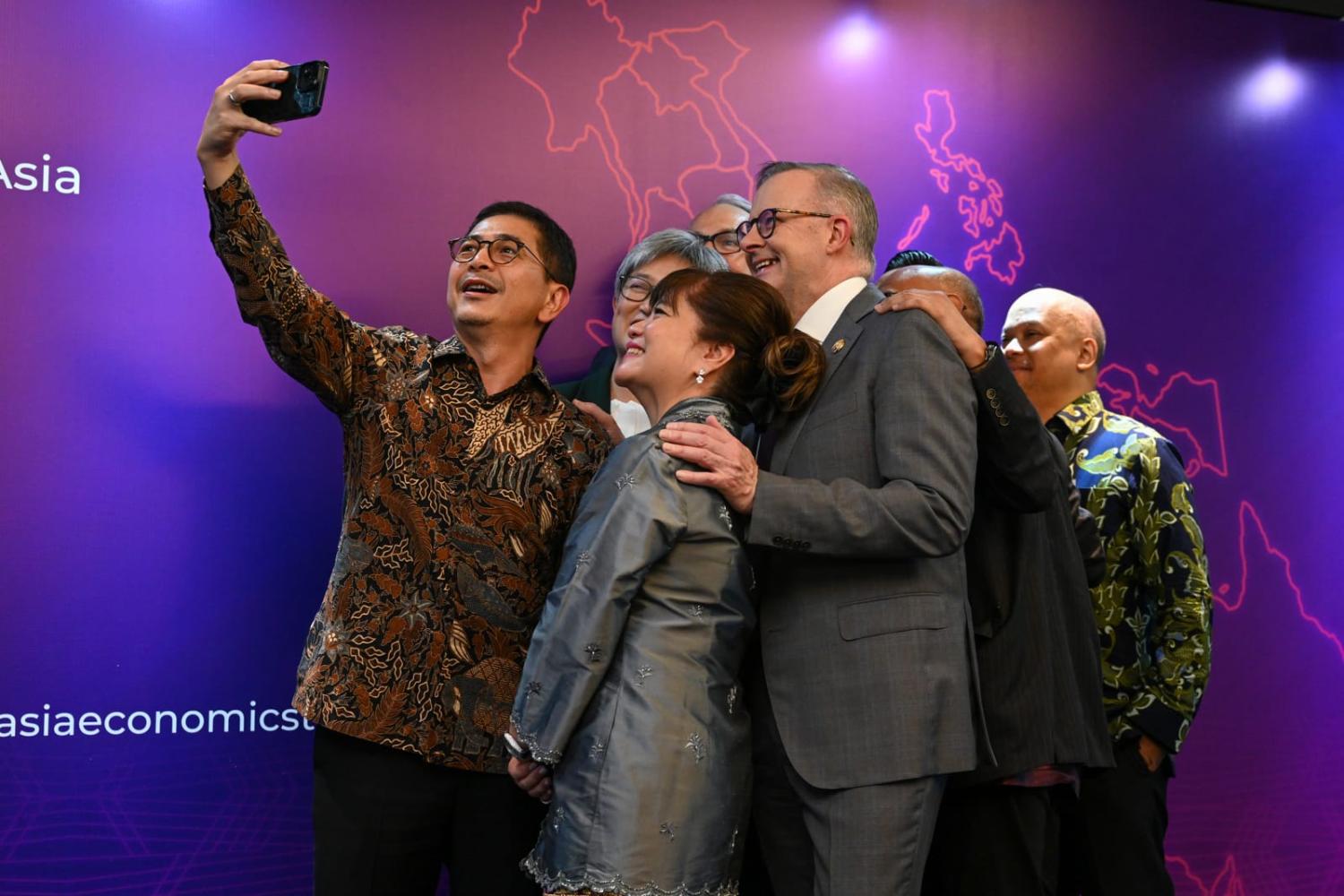There is an unmistakable disconnect between Australia’s trade and investment flows and the geo-economic importance of Southeast Asia.
The combined economies of the Association of Southeast Asian Nations (ASEAN) equal the fifth-largest economy in the world, and yet Australia’s total foreign direct investment into ASEAN was less than Australia’s FDI into New Zealand last year.
However, the Australian government is seeking to address this disconnect, highlighted by appointing a Special Envoy for Southeast Asia, Nicholas Moore, who last week together with Australia’s Prime Minister, Foreign Minister, Treasurer and Trade Minister, launched a much-needed report: Invested: Australia’s Southeast Asia Economic Strategy to 2040.
This report signals a new era of Australian engagement with Southeast Asia, adopting for the first time a “whole of government” approach to the region, with strong focus on unlocking private sector investment. While the government is yet to consider all 75 recommendations, Prime Minister Anthony Albanese’s initial announcement of $70.2 million over four years to set up “investment deal teams” based in the region is a strong signal in the right direction.
The issue of Australia’s disproportionately weak trade and investment footprint in the region is long-running and complex and consecutive governments have sought to address it.
For much of the past two decades Australia’s relationship with the economies of Southeast Asia has been necessarily focused on building the bedrock of a secure and economically prosperous region, including Australia’s critical role in promoting peaceful and lawful sovereignty and land claims. Working with allies and partners, Australia sought to address an infrastructure funding gap in the region through different mechanisms, including by developing the Trilateral Infrastructure Partnership (TIP) in 2016, with the objective of unlocking billions of dollars of private sector investment into the region by working with relevant export credit agencies. Member nations renewed their commitment to the TIP last October.
If the new report’s recommendation to establish a strategic investment facility for infrastructure projects is adopted, it should draw on lessons from the TIP.
Over time, Australia’s relationship with Southeast Asia has also been undergoing a transition from one based on aid and development to a recognition of the importance of equal and strategic economic partnerships and initiatives aimed at long-term economic and human connectivity. This included establishing the New Colombo Plan, which is now in its tenth consecutive year and has to date supported approximately 100,000 students (10,000 each year) to study and undertake internships in 40 locations across the Indo-Pacific.
In this context, the government should explore ways to leverage the backbone of the New Colombo Plan to support the Prime Minister’s newly announced initiative for a placements and internships pilot program for young professionals ($6 million), in order to streamline activities and maximise existing architecture.

Despite these efforts – and many more – to support trade and investment, Australia’s economic links with Southeast Asia have remained underdeveloped. As such, its relationships with countries in the region, while strong and friendly, have only been able to go so far.
Many economies within Southeast Asia, particularly Indonesia, regard trade and investment commitments as the markers for closeness. It’s common to hear diplomats from Southeast Asian nations cite the level of private sector investment from Australia vis-à-vis other countries as the unofficial indicator for how to score the bilateral relationship.
Australia’s economic underperformance in the region is more of an outlier than representative of how allies and partners engage in the region. Countries and regions including the United States, Canada, Japan, South Korea and the European Union all rank highly in terms of FDI by source country, as well as China, according to the 2022 ASEAN Investment Report.
The crux of the challenge for Australia lies in breaking the endless “chicken and egg” approach between governments and the private sector. A major challenge often referred to by key stakeholders is the perceived or actual risk related to political instability, regulatory barriers, corruption and currency fluctuation. The private sector calls on governments to enable investment through de-risking mechanisms, and governments challenge the private sector to look more openly at commercial opportunities. Under these circumstances, it has been difficult to mobilise momentum that can really move the investment needle at scale.
For this reason, the strategy’s focus on building confidence for private sector engagement is critical. For example, a recommendation in the strategy that may help to create a circuit breaker is looking at political risk insurance. While this would certainly help to build confidence, it is a necessary but not a sufficient condition to drive investment in the region. The government also should be careful not to create duplicative commercial and bureaucratic processes or in effect condition investments with political incentives.
The government should also continue to amplify and encourage ad nauseam the importance of purely commercial investments and aggregation of investment capital. Australia also has a critical role to enhance and leverage this private sector framework with like-minded countries, especially the United States.
In advance of the ASEAN 50th Anniversary Special Summit in March next year, this report release comes at a critical time. Australia is seeking to increase trade and investment because there are strong commercial opportunities for its businesses and because these investments will enhance long-term economic prosperity for the shared region. So, the task at hand for the government now comes down to prioritising the 75 recommendations and implementing an action plan that can mobilise Australia’s private sector quickly. Ultimately its success will be based on the willingness, demand and interest from the private sector.

